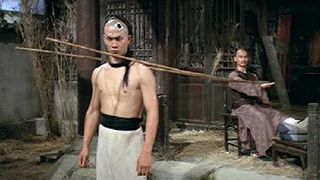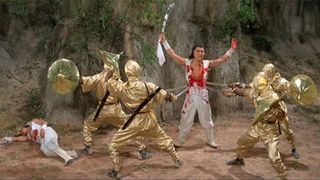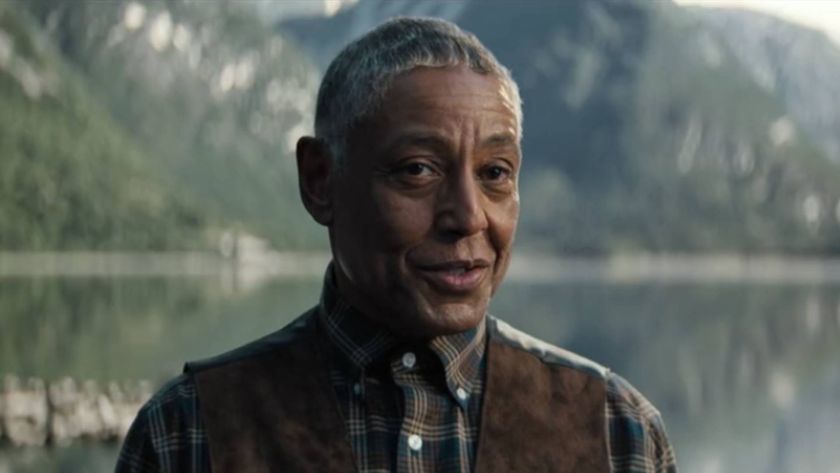7 Amazing Run Run Shaw Movies
In tribute to the master of kung fu cinema...

A lot of people are labelled legends when they pass away, but in Sir Run Run Shaw's case, it's an understatement.
Living to a grand age of 107 - he considered retiring at 100 - the great man left behind a huge and wonderful legacy.
Shaw was present at the inception of Chinese cinema - his elder brother Runme ran a silent movie studio in the 1920s - before going on to create arguably China's most internationally beloved film production studio, Shaw Brothers Studio.
Best known for its kung fu output, Shaw Brothers Studio produced a wide range of genres - including musicals, comedy, horror, drama, opera, science fiction, fantasy - and sometimes a combination of all of the above in one movie.
It would be impossible to put together a list of Run Run's greatest movies - Shaw Brothers was responsible for nearly a thousand movies (at one stage they were producing 40 films a year), and Run Run's name ('produced by Run Run Shaw' was a seal of quality if ever there was one) was on the very best. But we've collected a handful of our favorites. What follows is by no means definitive, but a mere tip of the hat to a glorious career.
Five Fingers Of Death (1972)

Released in Chinese cinemas in 1972, Five Fingers Of Death made a huge impact on US pop culture when Warner Brothers brought it to American audiences in 1973.
Sign up for the Total Film Newsletter
Bringing all the latest movie news, features, and reviews to your inbox
A key part of the kung fu wave - alongside Enter The Dragon , and TV series Kung Fu - that swept the States, Death 's intense plot and incredible fights made it the cool kids' favorite. in 2009 Quentin Tarantino listed it as one of his top 10 grindhouse movies of all time, and its influence on him is clear.
The 36th Chamber Of Shaolin (1978)

Another hugely influential film, 36th Chamber is a masterpiece, often topping lists of the greatest kung-fu movies ever made. And it was produced by Run Run.
Essentially a feature-length training montage, it features Gordon Liu as San Te, a vengeance-fuelled rebel who learns the value of patience and focus when he hides out in a Shaolin temple following an attack by the evil Manchu government.
Basically, imagine the wax-on, wax-off scene from Karate Kid extended and elevated to high-art, and you're on the way to picturing this film.
8 Diagram Pole Fighter (1984 )

After the success of 36th Chamber , Run Run decided to recreate the magic by casting Gordon Liu as another wounded warrior who seeks shelter in a monastery and learns to fight (here, pole fighting) in the process.
Basically completely disproving the adage that lightning never strikes twice, Fighter is easily the equal of Chamber, with arguably an even better third act (the final scrap sequence has to be seen to be believed).
The One-Armed Swordsman (1967)

Run Run Shaw's collaborations with director Chang Cheh are considered by fans to be the best of the genre, and watching One-Armed Swordsman , it's easy to understand why.
Beautiful production design adds a fairy-tale quality to this story of a student who has to re-learn kung-fu when he loses his arm during a fight with his master's daughter (Run Run's movies are packed with strong female characters; heroes and villains and love interests alike).
A completely different experience to the preposterous (and brilliant) sequel, One Armed Swordsman is a powerful, and emotional experience.
And it's ground-breaking too, featuring the first example of hand-held camera-work in kung-fu cinema, and a focus on integrating the fight-sequences into the narrative that significantly influenced the genre.
Dirty Ho (1976)

Another Gordon Liu / Run Run collaboration, Dirty Ho doesn't have quite the reputation of 36th Chamber , but it's definitely worth seeking out.
Whereas Chamber is fairly straight-faced, Ho is an all-out comedy, pulling out the slap-stick potential inherent in kung fu movies (both are highly choreographed, after all) producing fight scenes that somehow manage to be both laugh-out-loud funny, and jaw-slackingly awesome.
Like so many Run Run movies, it's almost impossibly fun, it's mainly here to highlight it to those who have yet to catch it.
The Battle Wizard (1977)

We've paid tribute to Battle Wizard in the past , so we won't go over the plot again (we're not sure if it's something we can do twice, follow the link to find out why) but trust us when we say that it exemplifies one of Run Run's most significant strengths - near limitless imagination / sense of sheer fun.
Chinese Super Ninjas (1982)

Whilst it's not quite as insane as Battle Wizard , Chinese Super Ninjas (or Five Element Ninjas ) is still extremely entertaining - not least because because the titular ninjas are themed around gold, wood, water, fire and earth (seriously, this thing's worth seeing for the outfits alone).
It's a gleeful watch, rammed with violent fights and giddy characterisation.
In terms of its historical value, it was Chang Cheh's final collaboration with Run Run at Shaw Studios, and is worth watching for that reason alone.
Obviously we're missing tons here - Avenging Eagle, The Water Margin, The Deadly Duo, Killer Darts, Oily Maniac to name but a handful more - so please tell us in the comments, what's your favourite Run Run Shaw movie, and why?
Sam Ashurst is a London-based film maker, journalist, and podcast host. He's the director of Frankenstein's Creature, A Little More Flesh + A Little More Flesh 2, and co-hosts the Arrow Podcast. His words have appeared on HuffPost, MSN, The Independent, Yahoo, Cosmopolitan, and many more, as well as of course for us here at 12DOVE.

















